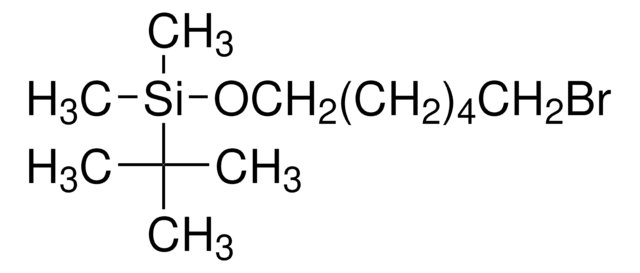528692
2-(6-Bromhexyloxy)tetrahydro-2H-pyran
97%
Synonym(e):
2-(6-Bromhexyloxy)-tetrahydro-2H-pyran, 6-Tetrahydropyraryloxy-1-bromhexan
About This Item
Empfohlene Produkte
Qualitätsniveau
Assay
97%
Enthält
1% potassium carbonate as stabilizer
Brechungsindex
n20/D 1.478 (lit.)
bp
125 °C/0.1 mmHg (lit.)
Dichte
1.209 g/mL at 25 °C (lit.)
Funktionelle Gruppe
bromo
ether
Lagertemp.
2-8°C
SMILES String
BrCCCCCCOC1CCCCO1
InChI
1S/C11H21BrO2/c12-8-4-1-2-5-9-13-11-7-3-6-10-14-11/h11H,1-10H2
InChIKey
CWSSIUJITPYGLK-UHFFFAOYSA-N
Suchen Sie nach ähnlichen Produkten? Aufrufen Leitfaden zum Produktvergleich
Verwandte Kategorien
Allgemeine Beschreibung
Anwendung
Lagerklassenschlüssel
10 - Combustible liquids
WGK
WGK 3
Flammpunkt (°F)
230.0 °F - closed cup
Flammpunkt (°C)
110 °C - closed cup
Persönliche Schutzausrüstung
Eyeshields, Gloves, multi-purpose combination respirator cartridge (US)
Hier finden Sie alle aktuellen Versionen:
Besitzen Sie dieses Produkt bereits?
In der Dokumentenbibliothek finden Sie die Dokumentation zu den Produkten, die Sie kürzlich erworben haben.
Unser Team von Wissenschaftlern verfügt über Erfahrung in allen Forschungsbereichen einschließlich Life Science, Materialwissenschaften, chemischer Synthese, Chromatographie, Analytik und vielen mehr..
Setzen Sie sich mit dem technischen Dienst in Verbindung.








